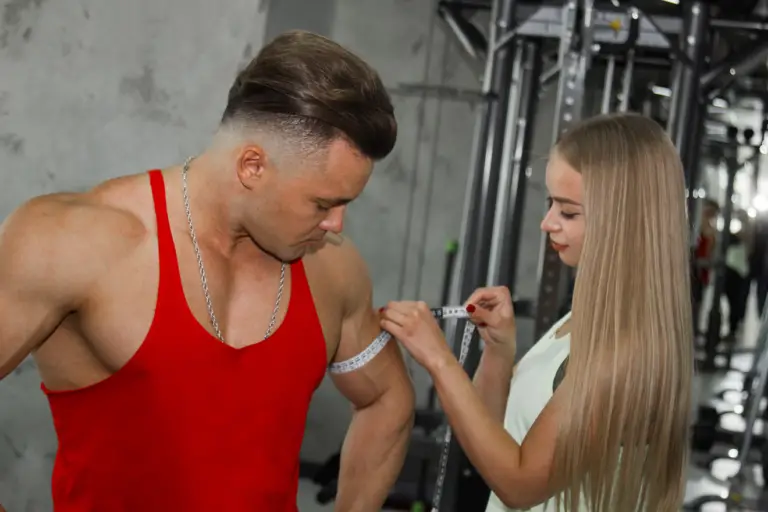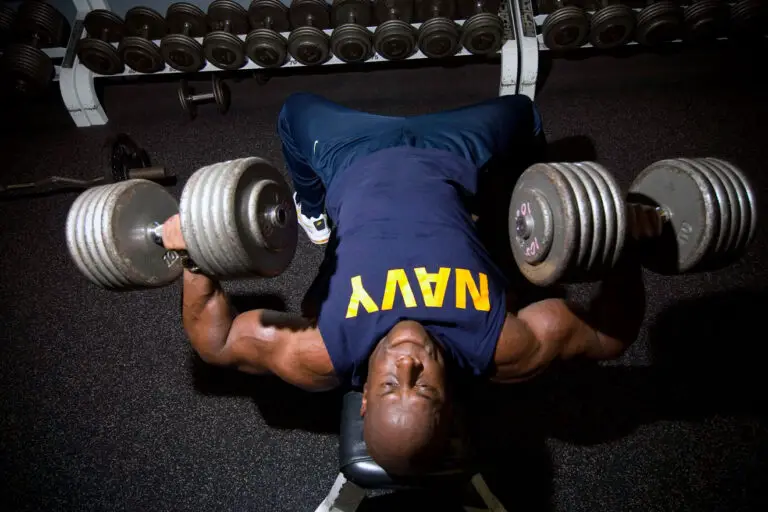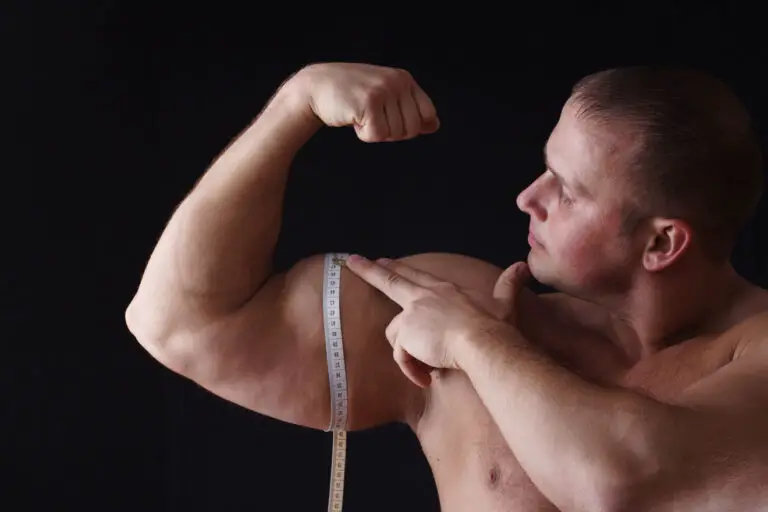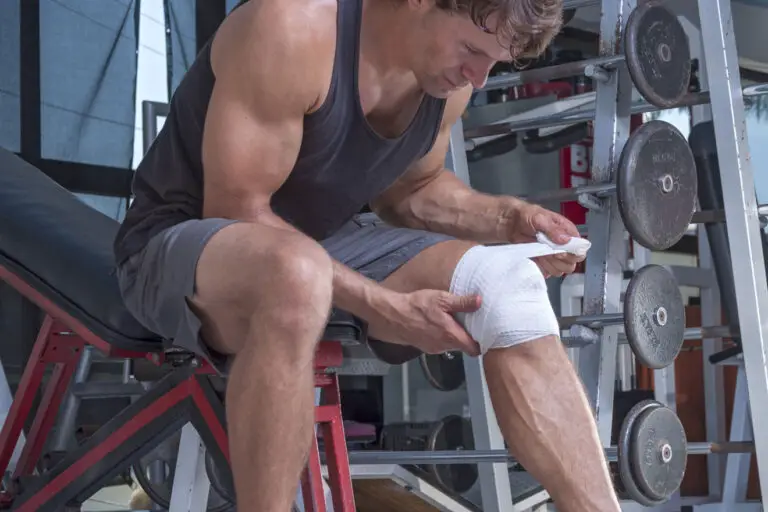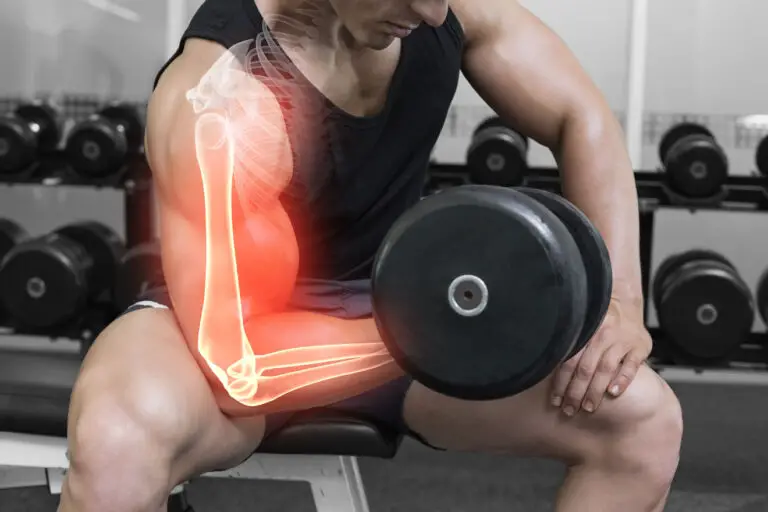Weight training guidelines and principles
Before diving into training, it’s very important to understand the guidelines and principles of weight training, as presented below. They are essential if you want to start on the right track, get the most out of your training, avoid mistakes, reduce your risk of injury, and achieve your goal as quickly as possible.
The formula for success
The general formula for success in weight training is very straightforward:
- Train
- Eat
- Rest
- Repeat
As long as you follow an effective training program, consume the right amounts of the right nutrients, get adequate rest to allow your body to recover (which should be incorporated into your training program), and keep repeating this sequence, you should see positive results.
Progressive overload
The weight training exercises that you perform will place stress on your muscles, which will force them to adapt. Depending on the type of training that you do, the adaptation can be an increase in muscular size, strength, endurance, or power. To ensure continual adaptation and progress, you have to gradually increase the amount of stress that you place on your muscles. Depending on your goal (size, strength, endurance, or power), the increase in stress can be:
- An increase in resistance (the amount of weight that you lift)
- An increase in the number of exercises, sets, or reps that you perform
- A decrease in the amount of time that you rest between sets and exercises
The gradual increase in stress designed to stimulate continual muscular development is known as progressive overload. It is one of the primary principles of weight training and an essential element of your training program. The weight training programs on this website implement progressive overload safely and effectively.
Safety always comes first
Weight training can be dangerous. Not only can you drop weights on your feet and trip over rogue dumbbells but you can also damage joints, tear ligaments, and impinge nerves if you don’t exercise properly or if you fail to follow important guidelines or principles. Even worse, if you are not careful, you can hurt someone else. With that in mind, always remember that your main priority when working out is not to develop your muscles or curves but rather to stay safe and injury-free. See Safety always comes first for safety tips and advice.
Always warm up before, and stretch after, a workout
An important element of practicing safety is making sure that you always warm up before you work out. Warming up reduces your likelihood of sustaining an injury by preparing your mind and body for exercise. The recommended procedure of warming up is presented in How to warm up.
Gently stretching the muscles that you have trained is important for safety as well. The procedure, which is covered in How to stretch, helps to keep your muscles, tendons, and ligaments strong, thus decreasing your risk of damaging them in the future. The post-workout stretch also helps to prevent a reduction in the range of motion of your joints, which may occur if you consistently exercise using a partial range of motion.
Practice proper form and technique
Each exercise that you perform has an ideal method of execution. Performing the exercise using the ideal method of execution ensures that the proper muscle groups are activated, the full range of motion is achieved, and the proper movement pattern is strengthened — all of which ensure maximum results. Sticking to the ideal method of execution also minimizes the risk of injury and prevents a reduction in your joints’ range of motion. Therefore, always be strict when it comes to form and technique. The proper form of most of the exercises included in the training programs is explained in the Exercise Database.
General tips for proper form and technique
- Before trying a new exercise, study its details closely
- Practice execution of the exercise using light weights
- Perform every rep using the full range of motion without locking out your joints, which will help to prevent joint damage
- Maintain full control of the weight at all times. Do not swing the weight, because momentum will take over, your target muscle(s) will cease to be the focus, and you will endanger your joints
- Visualize the contraction and relaxation of your target muscle. This will reinforce the mind–body connection, which will give you better control of your body. It’s also believed by some to produce better results
- Watch experienced gym-goers, and don’t be afraid to ask for advice
Perform reps at the right tempo
An important element of practicing proper form is performing reps at the right tempo or speed. Unless training to develop power, do reps relatively slowly and deliberately. Muscle-fiber growth is closely correlated with the amount of time a muscle is put under tension. Fast, intense reps do increase strength and power, but they do not lead to as much gains in muscle mass and endurance as do slower, more deliberate reps. The ideal rep tempo is different depending on whether you are training for strength, size, endurance, or power. The different tempos are discussed in How many sets and reps should you do?
Maintain equal focus on concentric and eccentric rep phases
Generally speaking, reps are divided into two phases:
- Concentric/Positive (for example, when, during a dumbbell curl, you raise the dumbbell to your chest)
- Eccentric/Negative (when you lower the dumbbell back to the starting position)
One complete rep goes through the joint’s full range of motion.
Many beginners focus only on the concentric phase of the movement because that’s when they strain against the weight. However, it’s now well known that the eccentric phase actually has more muscle-splitting potential than does the concentric phase, which means that the part when you lower the dumbbell is actually more important for building muscle than is the part when you lift it. Therefore, to get the best results, focus on both phases of every rep.
Don’t forget to breathe
Breathing is something you will almost certainly have to work on. Get into the habit of breathing properly from the outset so that you will not have to try to fix improper breathing habits in the future. The general rule is to inhale during the eccentric phase of the rep and exhale during the concentric phase. For example, if doing the barbell squat, inhale as you squat and exhale as you stand back up. Try not to hold your breath.
Sometimes, such as when deadlifting or squatting a very heavy weight, you can’t help but to hold your breath. There is even a technique to it, known as the Valsalva maneuver, which involves taking a deep breath and attempting to exhale while closing your airway. This produces internal pressure that supports your core and helps you to generate power during the lift. If you use the Valsalva maneuver, try not to hold your breath for longer than a couple of seconds.
Flush your muscles
Unless you’re performing supersets (explained in Intensity techniques) or following a circuit training program, perform all exercises for one muscle group before moving on to the exercises of the next muscle group. In other words, focus your attention on one muscle group at a time. This allows you to ‘flush’ each muscle group — that is, boost the blood flow to that area of the body, giving the area a good ‘pump’ and ensuring that it gets adequate oxygen and nutrients. Flushing is one of the classic principles of weight training and bodybuilding.
Exercise large muscle groups before small ones
Unless you are following a pre-exhaustion protocol (covered in Intensity techniques), perform exercises that target your large muscle groups first. This principle will be prewritten into any decent training program. The reason is that small muscle groups tend to assist large ones, and if you tire the small ones first, they will not be able to offer proper assistance to the large muscle groups. As a result, you will limit your ability to overload your large muscle groups. For example, your triceps brachii assists your chest when you perform the barbell bench press. If you train your triceps brachii before you train your chest, you will not be able to do much lifting with your chest.
Large muscle groups include:
- Quadriceps (rectus femoris, vastus lateralis, vastus medialis, and vastus intermedius)
- Gluteals (gluteus maximus, gluteus medius, and gluteus minimus)
- Hamstrings (biceps femoris, semitendinosus, and semimembranosus)
- Back (latissimus dorsi, trapezius, erector spinae, teres major, rhomboids, infraspinatus, and teres minor)
- Chest (pectoralis major, pectoralis minor, and serratus anterior)
- Shoulders (anterior deltoid, lateral deltoid, and posterior deltoid)
Small muscle groups include:
- Abdominals (rectus abdominis, internal oblique, and external oblique)
- Calves (soleus and gastrocnemius)
- Triceps brachii
- Biceps brachii
- Forearms (brachioradialis, wrist flexors, and wrist extensors)
Prioritize weak areas of a muscle group
Different exercises can target different areas of a muscle group. For example, both the barbell bench press and the incline reverse-grip barbell bench press target your pectoralis major (chest); however, the barbell bench press mainly targets your lower (sternal) pectoralis major, whereas the incline reverse-grip barbell bench press mainly targets your upper (clavicular) pectoralis major. If your upper chest is lagging, start with the incline reverse-grip barbell bench press before moving on to the barbell bench press.
Follow a balanced training program
When choosing a training program, it’s very important to pick one that balances movement patterns in accordance with recommended muscle strength ratios. Otherwise, in the long run, you could develop strength imbalances between opposing muscle groups, which could lead to bad posture, joint instability, muscle tightness, pain, and injury. For example, most men train their internal shoulder rotators (pectoralis major, anterior deltoid, latissimus dorsi, teres major, and subscapularis) much more than they train their external shoulder rotators (posterior deltoid, infraspinatus, and teres minor). As a result, the tightness of their internal shoulder rotators can in time pull their shoulders forward, giving them a ‘caveman’ posture! To make the matter worse, their rotator cuffs, which keep their shoulder joints in place, can become compromised, leading to joint instability, impingement, and pain. The strategy that I used to balance the men’s and women’s training programs is explained in the men’s and women’s respective training program overviews.
Do not neglect your legs
Many men interested in building muscle focus on their upper body much more than they do on their lower body. Some even completely forgo training their legs! This is a very bad idea. The human body is a system. If one half is trained, the other half must also be trained to preserve balance, symmetry, and proportions. What’s more, if you do not give your legs equal attention:
- Your weak legs will limit the abilities or your upper body. Your legs act as your base, and without a strong base, you will not be able to do much with your upper body
- You will experience slower and limited overall muscle gains. The reason is that your legs house your largest muscle groups, and when you exercise large muscle groups, your body releases more anabolic hormones, which promote body-wide muscular development. This means that, if you want big arms, you must train your legs
Do not neglect your upper body
Just as some men neglect their legs, some women neglect their upper body, especially their chest and back. The usual reason is that they are afraid of looking too muscular. Women already naturally have a far stronger lower body than upper body. This is their natural balance. However, by neglecting their upper body, they can break that balance.
By giving the upper body the attention that it deserves, women can maintain their natural balance, as well as develop more ideal proportions and features. For example, tightening the back muscles and posterior deltoids will keep the shoulders back, building the chest muscles will raise the breasts, and broadening the shoulders will make the waist look thinner — all without looking too muscular. The additional upper-body muscle will also help to increase metabolism, which burns more calories and increases energy levels. What’s more, the stronger upper body will help to train the lower body.
Cultivate a strong core
The word ‘core’ refers to all of the muscles in your torso, especially your abdominals, obliques, spinal erectors, and various other deep muscles that attach to your spine and pelvis. Having a strong core is very important because your core muscles work together to:
- Stabilize your body during lifts and movements
- Transfer energy from one side of your body to the other side
- Transfer energy from your lower body to your upper body
Your core is also where you generate most of your power. As such, it can be considered your body’s power base.
By training your core, you can increase strength and stability throughout your body, build power, promote more efficient movements, and improve balance and coordination — all of which can improve performance and reduce the risk of injury. Therefore, ensure that your training program incorporates effective core training.
Note that isolating your abs with the crunch does not count as effective core training. Proper core training involves performing major compound and functional exercises that simultaneously engage multiple core muscles. Such exercises include the barbell squat, barbell deadlift, barbell lunge, weighted push-up, pull-up, front plank, wheel rollout, bicycle crunch, hanging leg and hip raise, weighted Russian twist, cable wood chop, and lying side hip raise. All of the training programs on this website incorporate effective core training.
Strengthen all primal movement patterns
Your body is designed to move in certain key ways, known as primal movement patterns. These are:
- Squat
- Lunge (forward, sideways, and backward)
- Hinge at the hips
- Twist
- Pull (horizontally and vertically)
- Push (horizontally and vertically)
- Walk/Jog/Run (gait)
You use these movements every day of your life. For example, you squat as you sit down, you lunge over puddles, you hinge at the hips to get out of bed or to pick something up, and you twist whenever you reach for the side drawer under your desk or throw a ball for your dog to fetch. The seven primal movement patterns are used in different combinations in everyday activities and are especially important for athleticism and sporting performance. It’s therefore very important to perform exercises that strengthen these movement patterns. In so doing, you will develop functional fitness — the kind of fitness that not only improves your overall athleticism but is also useful in everyday life.
Unfortunately, many training programs focus solely on training muscles, not movement patterns. You are asked to perform certain exercises for each muscle group. Often, the exercises are isolation exercises, which strengthen movement patterns that are of no use outside of the gym. For example, the dumbbell fly movement pattern is only useful if you want to give people tight hugs! The good news is that the training programs on this website incorporate effective compound and functional exercises that work to strengthen all of your body’s primal movement patterns, thus improving your overall fitness and athleticism and helping you to get the most out of your time at the gym.
Incorporate unilateral training
An important element of developing functional fitness is to perform unilateral exercises (exercises that allow you to train one side of your body at a time). Most daily activities are unilateral, so it makes sense to include exercises that strengthen unilateral movement patterns. All dumbbell exercises and many cable and machine exercises can be performed unilaterally, so you should alternate, sometimes doing them bilaterally and other times performing them unilaterally. This will also add variation to your program, which will keep you engaged.
Unilateral exercises have other benefits:
- Since they put you off balance, they force the recruitment of more stabilizer muscles, especially in your core
- They can be used to fix issues with symmetry and contralateral muscle strength (that is, differences in strength between the right and left sides of your body)
To ensure the strengthening of unilateral movement patterns, unilateral exercises have been included in all of the training programs on this website. When performing a unilateral exercise, always start with your weak side, and never complete more reps with your strong side. This will allow your weak side to catch up.


